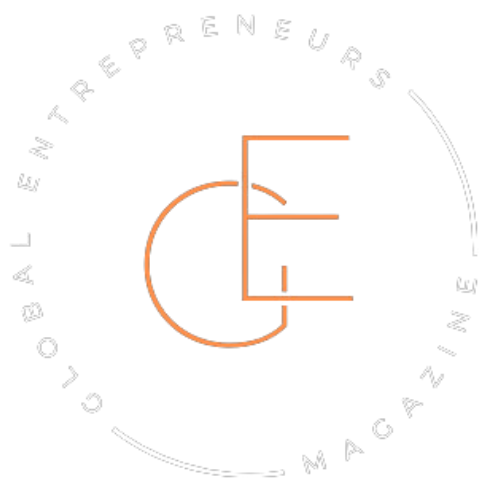It’s 3:07 a.m. You’ve already replied to two customer emails, scheduled tomorrow’s Instagram post, and updated a client invoice. Your eyes are dry, your brain’s buzzing, and there’s still a half-written landing page waiting in another tab.
No team to pass the task to. No assistant to handle the admin. It’s just you—and the endless list of things that “can’t wait.”
That moment? It’s the quiet cost of doing everything yourself. No headlines talk about it. No productivity hack solves it. But every solo founder has been there, staring into the glow of a laptop while the rest of the world sleeps.
And yet, most keep grinding like this for months—sometimes years—believing it’s part of the job. Like if you just push harder, the chaos will eventually make sense.
It won’t. Not unless something shifts.
The trap of doing everything yourself
Most solo founders don’t plan to wear every hat—they just fall into it. One day you’re building your product. The next, you’re answering customer questions, writing your own ad copy, handling late payments, and Googling how to fix a glitch on your site.
It creeps in slowly. At first, doing it all feels scrappy and admirable. You’re bootstrapping. Hustling. Taking charge. But over time, it starts to cost you in ways you don’t notice right away.
You stop responding to potential leads because you’re too buried in admin. You rush through product updates because your inbox won’t stop blinking. Your social media posts become afterthoughts. Not because you don’t care—but because there’s only so much of you to go around.
There’s a quiet danger in being capable. You convince yourself no one else can do it right, or at least not without a long explanation. So you keep doing it all, hoping things will “slow down soon.”
But they don’t. Not unless you decide to stop treating your time like it’s unlimited.
What automation actually looks like at ground level

Automation gets thrown around like some magic switch that only tech wizards understand. But most of the time, it’s painfully simple.
It’s your calendar sending booking links instead of playing email tag.
It’s a thank-you email firing off the second someone downloads your lead magnet.
It’s your social posts going live while you’re actually in a client meeting.
Nothing fancy. Just small, quiet systems running in the background so you don’t have to.
And no, you don’t need a full tech stack or hours of setup. Most of these tools come with plug-and-play options. No coding. No deep learning curve. Just fewer clicks and fewer things slipping through the cracks.
Automation at this level doesn’t replace the human part of your business. It removes the repetitive stuff that’s pulling your attention away from it.
The shift from survival mode to sustainable momentum
Something changes the first time you wake up and realize your inbox sorted itself overnight. Or when a client schedules a call without ten messages back and forth. It’s not dramatic, but it’s real.
One founder we spoke to set up three automations in a single afternoon—nothing revolutionary. Just a welcome email, a canned response for FAQs, and an auto-sync between their form and calendar. The next week, they had more time to focus on a pitch that landed a new client.
That’s the difference.
When you’re not chasing after every tiny task, your energy stops bleeding out. You think clearer. You plan better. You don’t feel guilty for taking a full lunch break. And maybe, for the first time in months, you’re building with intention instead of just surviving another day.
Momentum isn’t about moving faster. It’s about removing the drag.
What low-cost actually means—tools that don’t break the bank
You don’t need enterprise software or a developer on speed dial to make automation work. Some of the most useful tools for solo founders cost less than what you spend on coffee each week.
A few examples?
- Calendly handles your scheduling without the back-and-forth.
- Zapier connects your apps so they talk to each other automatically.
- MailerLite sends newsletters while you focus on writing new ones.
- Notion keeps your chaos organized without turning into another to-do list.
But the real cost isn’t the subscription fee—it’s what these tools give back. Hours you no longer spend on repetitive admin. Mental clarity you regain from not remembering every task. Space to actually work on your business instead of just in it.
Low-cost doesn’t mean cheap. It means high return on your time.
The mindset shift that matters
Solo founders often treat tools like optional upgrades—something to figure out later, when the business is bigger or the budget allows. But waiting usually means burnout comes first.
The shift happens when you stop thinking of automation as a luxury and start seeing it as a form of support. Not a replacement for your work, but a quiet co-worker that never forgets a task or calls in sick.
Letting go of control doesn’t mean letting go of quality. It means accepting that your time is better spent on strategy, not sorting spreadsheets or chasing follow-ups.
Automation is a first step toward delegation—one that doesn’t require hiring, onboarding, or micromanaging. It’s the most affordable way to stop doing everything yourself, without giving anything away.
And it starts with a simple question: what am I still doing manually that no longer needs me?
You don’t need to build faster—you need to build smarter
Most solo founders don’t run out of drive. They run out of hours. The business doesn’t stall because they lacked effort—it stalls because their attention gets buried under tasks that could’ve been automated weeks ago.
Trying to outwork the chaos only takes you so far. At some point, the smarter move is to step back and ask: what’s worth my energy right now?
You don’t have to automate everything overnight. Just pick one task—the thing you dread doing every week. Find a tool that handles it. Let it run. Then take that reclaimed hour and put it toward something that actually moves the needle.
No big overhaul. No fancy system.
Just one less thing on your plate. Then another. And another.
That’s how momentum builds.




